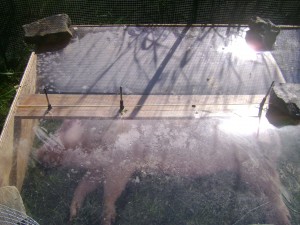Smelling death electronically

Cadaver dogs could soon be sniffing the death scent of their profession.
Two Penn State researchers think eventually electronics could replace the canines. They recently presented a paper detailing progress made in profiling the chemicals released right after death. Understanding what chemicals are released and when could lead to an electronic cadaver sniffer that would locate dead bodies as well as provide valuable details such as time elapsed since death.
The paper was presented at a national meeting of the American Chemical Society whose slogan is "Chemistry for Life." Chemistry is for death, too, apparently.
Such an electronic device could provide deeper insights into forensics and criminal investigations as well as offering a cheaper alternative to cadaver dogs, according to Dan Sykes, a Ph.D at Penn State's Dept. of Chemistry.
"These dogs are highly effective, but it takes lots of time, expense and manpower to train them. If there was a device that was as effective for a fraction of the cost, that would be something worth pursuing," Sykes said in a Penn State press release.
I have calls into both Sykes and graduate student Sara Jones who also worked on the project to get a better fix on how such an electronic device would work and when one might appear. If dependable and practical, it would provide enormous value for criminal investigators and rescuers in disasters such as earthquakes.

Meanwhile Sykes and Jones are working toward profiling the combinations of 30 compounds that are released by the body in the days following death. Two are aptly named putresine and foul-smelling cadaverine which are released early on in decomposition.
Sykes and Jones are working with "humanely euthanized" pigs which closely mimic the decomposition of humans. Previous studies have been done with two or three day old human cadavers, but they did not present chemicals such as cadervine or putrescine which appear soon after death.
Solid phase micro extraction (SPME) fibers sticking up in the photo above are used to capture the gases. Over the course of a week, the researchers collect odor data every six to twelve hours to create a "picture" of the decomposition process.
Their work gives new meaning to an old joke: "What's Beethoven doing right now? Decomposing."
Follow me on Twitter.
This post was originally published on Smartplanet.com